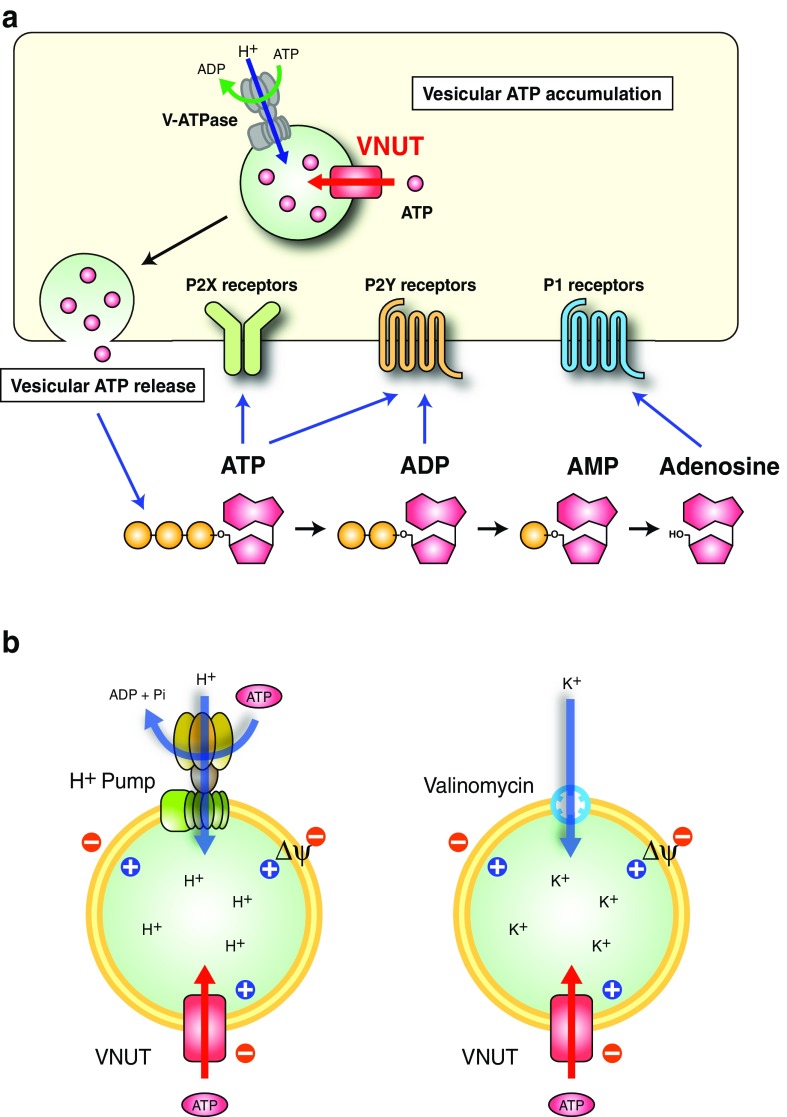Fig. 1.
Vesicular storage and release of ATP. a Purinergic chemical transmission. ATP is accumulated and stored in secretory vesicles through VNUT-mediated active transport. The driving force (Δψ) is supplied by V-ATPase at the expense of ATP hydrolysis. Then the vesicular ATP is secreted through exocytosis from purinergic cells upon stimulation (vesicular ATP release). The released ATP and the hydrolyzed products, ADP, AMP, and adenosine, can then bind to the respective purinoceptors to transmit signals in either an autocrine- or paracrine-dependent manner. b Assay concept. (left) In secretory vesicles, VNUT-mediated ATP transport can be initiated by ATP hydrolysis by V-ATPase. (right) To banish “the demons of ATP transport” [3], H+-ATPase is extruded from the assay system and instead a valinomycin-mediated K+ diffusion potential is introduced to trigger ATP uptake [4]

